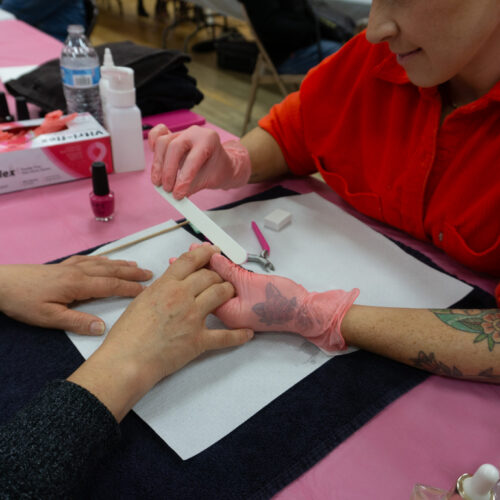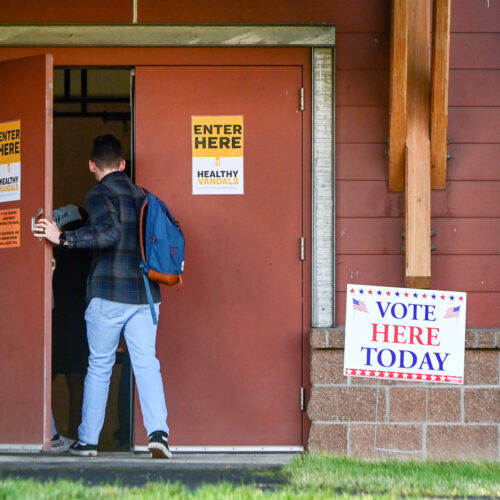Food-Service Worker Shortage Affecting WSU Campus
If you’ve recently gone out to eat at Washington State University, you may have noticed a reduction in services and hours.
Employers in foodservice are having difficulty filling positions. At WSU Dining Services, that difficulty led to the closure of a coffee shop, limited hours for markets and cutback on catering services.
Sarah Larson, the director of Dining Services, has eleven professional positions to fill. In addition, Dining Services normally employs roughly eight hundred to a thousand student employees. The disruption during covid meant that this year they’re operating with roughly 600.
“Just like the rest of the country, frankly, — you see ‘Help Wanted’ signs out everywhere. And there’s a dynamic throughout the economy right now, the macro economy, where people just cannot find enough people to come and apply for these jobs. And we’re no different,” she said.
The reason for the drop in employers’ ability to find workers may not have one answer, said Ben Cowan, an associate professor in the School of Economics at WSU — but it’s more than an unwillingness to work.
“To an economist, a ‘shortage’ is a loaded term, because the shortage — the immediate response to an economist is, ‘At what price?’” he said. “Or in this case, at what wage, right, are we talking about a shortage?”
Some analysts have suggested a fundamental change in worker attitudes about their job, Cowan said, especially for those who worked in low-paying jobs at a higher risk throughout the pandemic.
Right now, employees have more bargaining power to ask for better wages or other benefits. High job creation rates also mean more employees are willing to quit their job knowing others will hire them.
“It’s one of the best ways to boost your wage,” Cowan said. “Oftentimes, it’s by going to another employer that you can get a raise.”
Ray Batina, a professor in the School of Economics at WSU, noted that while productivity has increased steadily, data from the economic policy institute shows that compensation has not kept up with that productivity since 1979.
“People who have a nice job have been living high off the hog for the last 30 or 40 years, enjoying these low prices,” Batina said. “It’s very possible that as the structure of the economy changes, then that’s going to change.”
How long that worker’s market will last is uncertain, Batina said, and may depend in part on how many COVID-era programs become permanent, such as the child care tax credit that was expanded by the American Rescue Plan and will continue into 2022.
“It can be a bit of a push pull or you know, there’s a tension there between workers and firms, and it’s in some ways kind of who can hold out longer.”
Even as businesses seem desperate to hire, some prospective employees said they’re having trouble seeking jobs. Desirae Scott, a former janitor at WSU, was let go after being hospitalized and failing to meet the state deadline to provide proof of vaccination.
Although she applied to roughly 15 jobs, she only heard back from a few, and none immediately scheduled an interview. The reason for that is unclear, but Scott thinks the cycle of low staff and new hires is making it difficult for some employers to catch up.
“When I’ve applied for jobs, the managers aren’t there. Or they don’t have a manager, or their manager is a brand new manager that just got hired and has no idea what they’re doing,” she said. “I’ve applied to like, everywhere in the town, almost. And it’s just like, they have the posters up for now hiring. But that’s as far as they want to go with the hiring process.”
There’s also a percentage of employees who have yet to return to the workforce, Cowan said, though economists haven’t determined exactly why that might be. Some workers have chosen to stay home while collecting unemployment or disability.
“I’ve got so many friends that are, you know, unemployed and perfectly fine with being unemployed because you can get unemployment or disability or government checks,” Scott said. And they are more than what a paycheck would be from, like, a McDonald’s or Taco Bell job.”
In Pullman, the median pay for wait staff is $31,806 annually, or $15.29 an hour, and $33,605 annually for cooks, or $16.60 an hour, according to occupation snapshot reports from Emsi.
At WSU Dining Services, students are paid $13.69 for most positions and up to $15.46 for student managers. Several professional listings on indeed.com showed monthly salaries of $2,677 to $2,738 for professional staff positions.
Jennifer Hackman, economic development manager for the City of Pullman, noted that some employers seem to have more trouble than others attracting employees.
“Anecdotally, I have found that higher end restaurants are not having trouble finding servers or managers, while fast [and] casual, people struggle to get help at the door,” Hackman wrote. “I have also found, again anecdotally, that some employers of mid-level skilled workforce are having their pick of employees and others are having trouble getting one candidate.















